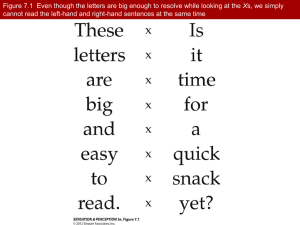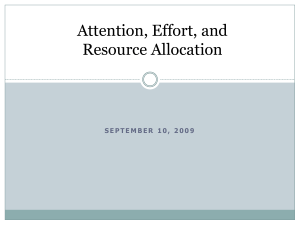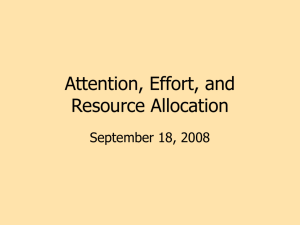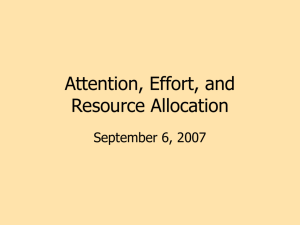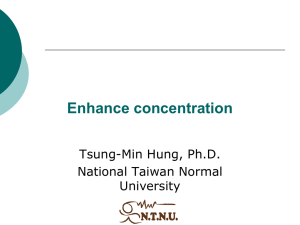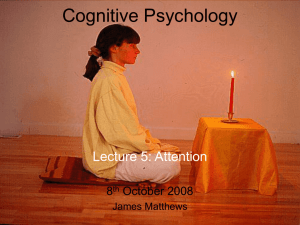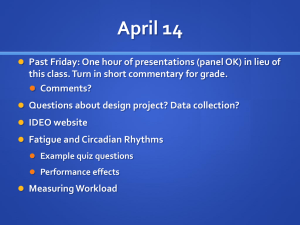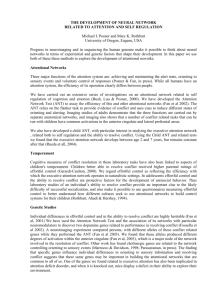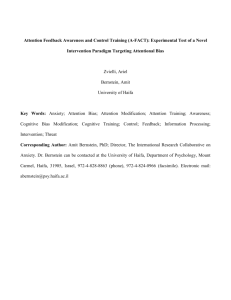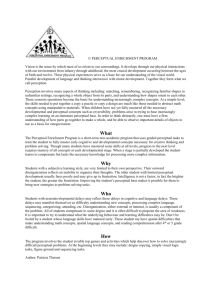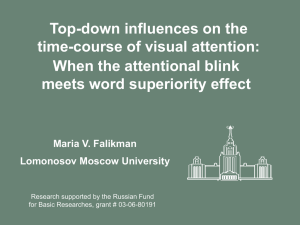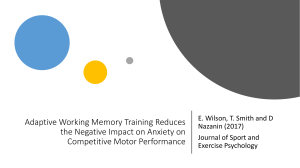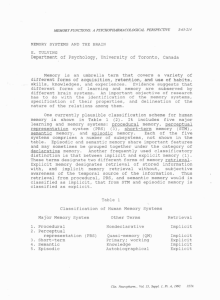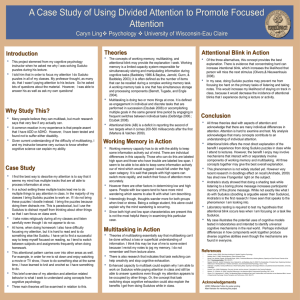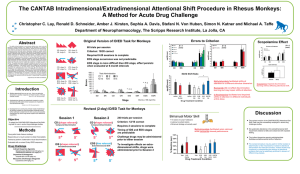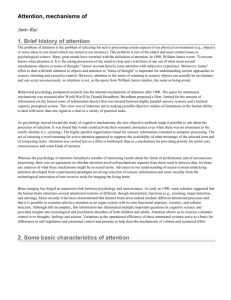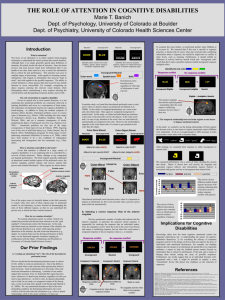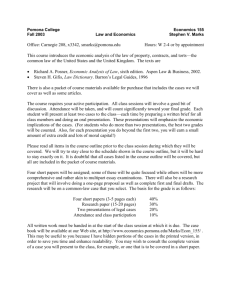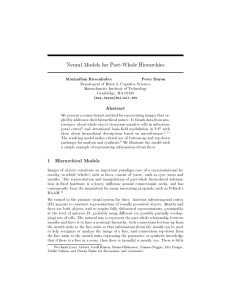PSY 4500- Cognitive Psychology
advertisement
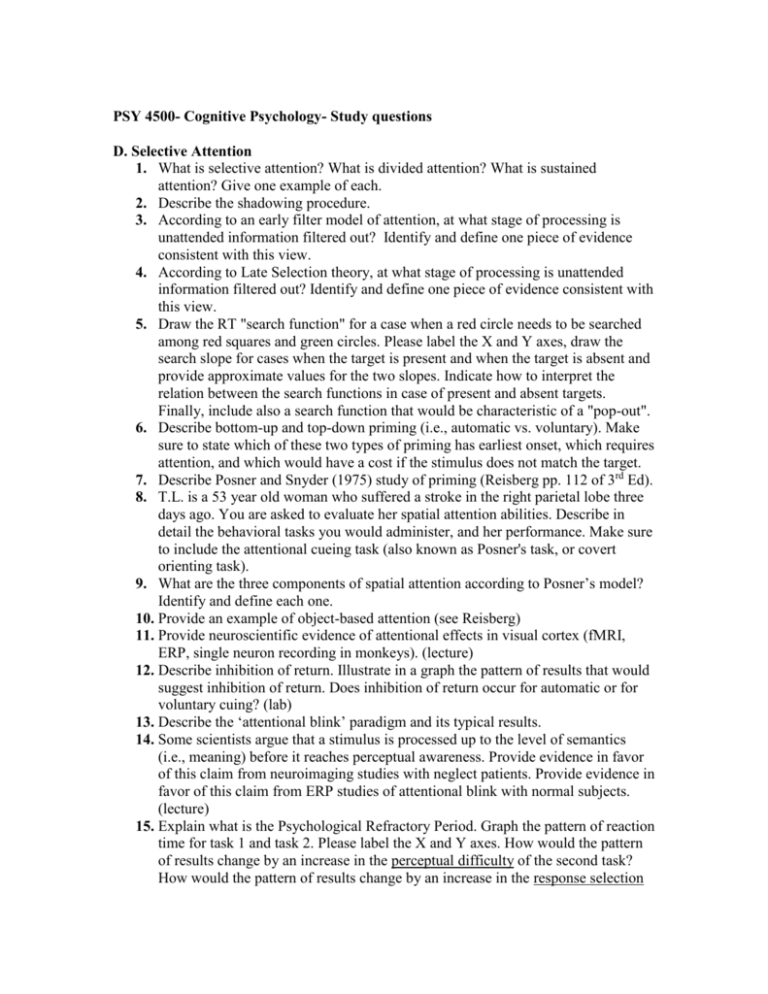
PSY 4500- Cognitive Psychology- Study questions D. Selective Attention 1. What is selective attention? What is divided attention? What is sustained attention? Give one example of each. 2. Describe the shadowing procedure. 3. According to an early filter model of attention, at what stage of processing is unattended information filtered out? Identify and define one piece of evidence consistent with this view. 4. According to Late Selection theory, at what stage of processing is unattended information filtered out? Identify and define one piece of evidence consistent with this view. 5. Draw the RT "search function" for a case when a red circle needs to be searched among red squares and green circles. Please label the X and Y axes, draw the search slope for cases when the target is present and when the target is absent and provide approximate values for the two slopes. Indicate how to interpret the relation between the search functions in case of present and absent targets. Finally, include also a search function that would be characteristic of a "pop-out". 6. Describe bottom-up and top-down priming (i.e., automatic vs. voluntary). Make sure to state which of these two types of priming has earliest onset, which requires attention, and which would have a cost if the stimulus does not match the target. 7. Describe Posner and Snyder (1975) study of priming (Reisberg pp. 112 of 3rd Ed). 8. T.L. is a 53 year old woman who suffered a stroke in the right parietal lobe three days ago. You are asked to evaluate her spatial attention abilities. Describe in detail the behavioral tasks you would administer, and her performance. Make sure to include the attentional cueing task (also known as Posner's task, or covert orienting task). 9. What are the three components of spatial attention according to Posner’s model? Identify and define each one. 10. Provide an example of object-based attention (see Reisberg) 11. Provide neuroscientific evidence of attentional effects in visual cortex (fMRI, ERP, single neuron recording in monkeys). (lecture) 12. Describe inhibition of return. Illustrate in a graph the pattern of results that would suggest inhibition of return. Does inhibition of return occur for automatic or for voluntary cuing? (lab) 13. Describe the ‘attentional blink’ paradigm and its typical results. 14. Some scientists argue that a stimulus is processed up to the level of semantics (i.e., meaning) before it reaches perceptual awareness. Provide evidence in favor of this claim from neuroimaging studies with neglect patients. Provide evidence in favor of this claim from ERP studies of attentional blink with normal subjects. (lecture) 15. Explain what is the Psychological Refractory Period. Graph the pattern of reaction time for task 1 and task 2. Please label the X and Y axes. How would the pattern of results change by an increase in the perceptual difficulty of the second task? How would the pattern of results change by an increase in the response selection of the second task? How would the pattern change by an increase in the perceptual difficulty of the first task? How would the pattern change by an increase in the response selection difficulty of the first task? Show these different patterns in your graphs 16. Name one way to increase the perceptual difficulty of a task. Name one way to increase the response selection difficulty of a task
